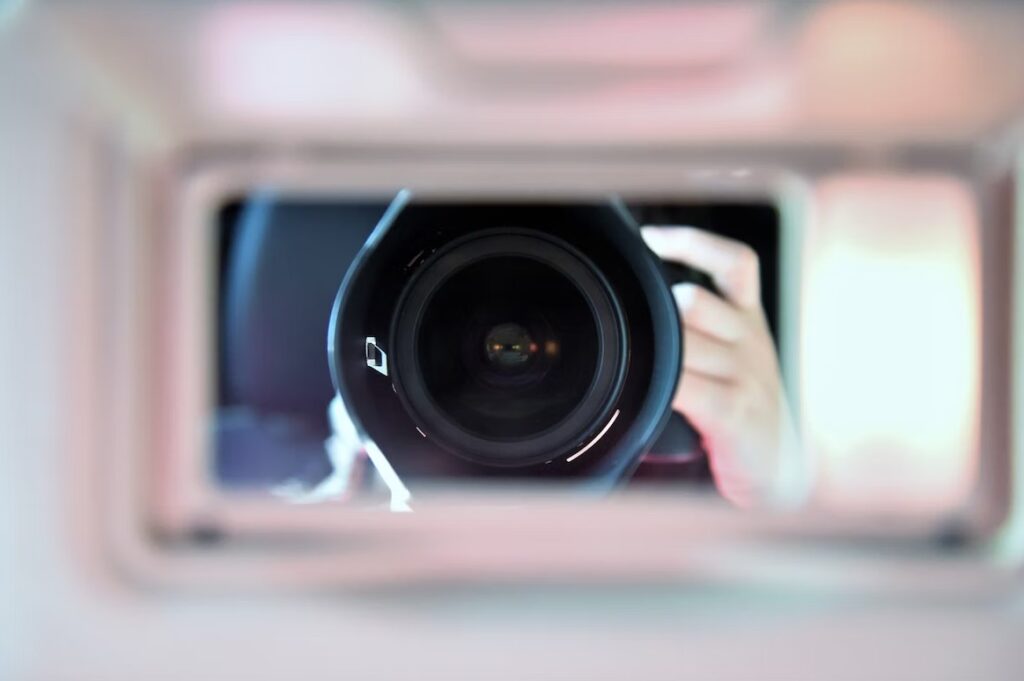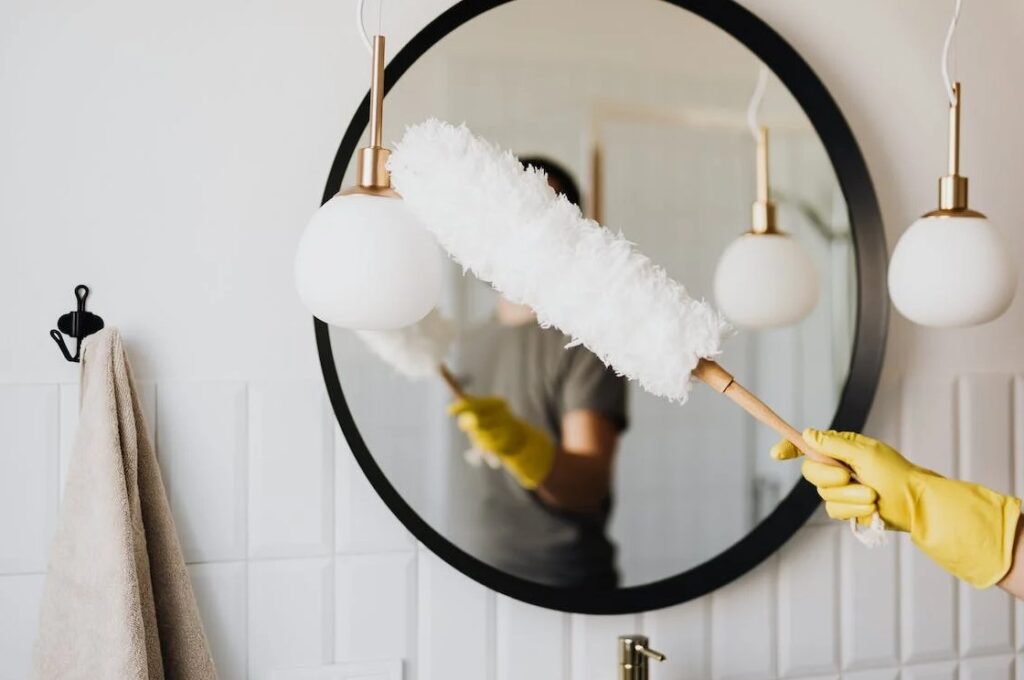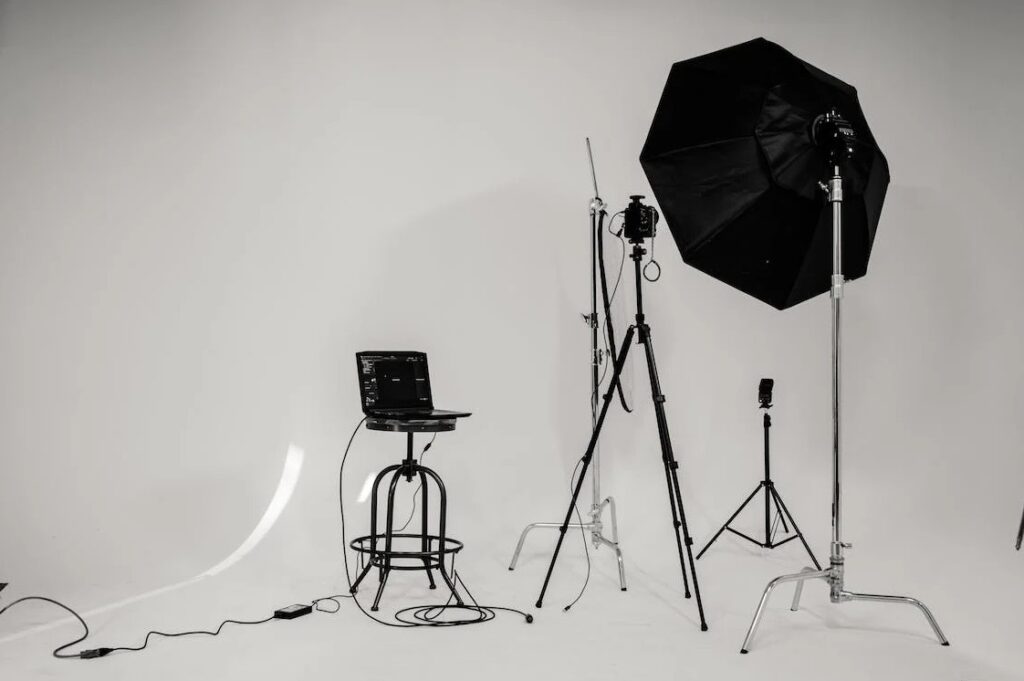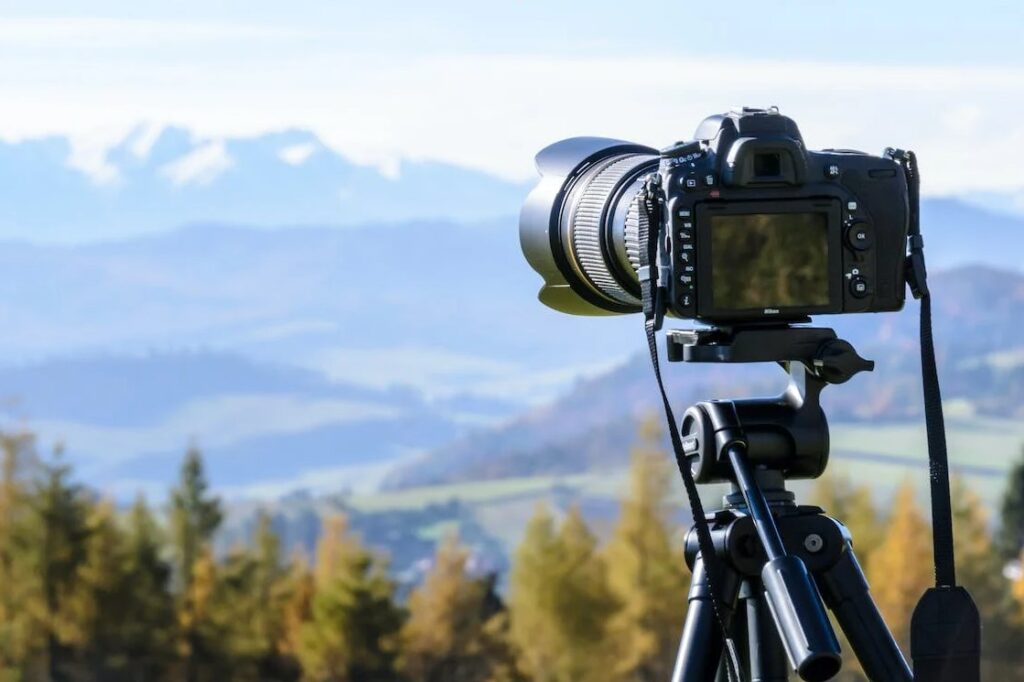If you aren’t aware of the logistics of mirror photography, the baseline is that they reflect pretty much everything, including the subject and the phone you are using to take the image. Sometimes, taking an image in front of a mirror also leads to unwanted reflections and distortions, which further ruin the image completely.
Being frustrated with something of this sort is common and you aren’t the only one struggling with a similar issue. If it is becoming difficult for you to click an image in front of a mirror without any reflection, you have come to the right place.
This article will explore everything you need to know about mirror photography, its basics, and how to take crystal-clear images.
Table Of Contents
1. Use polarizing filters to minimize reflections
If you are using a camera to capture the image in front of a mirror, the easiest fix for that is to use a polarizing filter. These are convenient to use and keep the unwanted reflections out of line so you won’t have to complain about the same.
For those who aren’t aware of what polarizing filters do, their main function is to block certain wavelengths of light, which, in turn, reduces the reflections when you are taking a picture in front of a shiny or reflective material like a mirror.
Using a polarizing filter is simple. All you need to do is attach it directly to your camera lens and adjust it until you are comfortable with the desired effect that you see in the viewfinder. You’d need to experiment with certain filter settings, so keep that into consideration.
2. Adjust Your Camera Angle to Avoid Reflections
Sometimes, we don’t even realize but the way we keep our camera angled while taking a picture in front of a mirror makes a huge difference. Adjusting the angle of the camera can introduce a change in the perspective, which allows you to find the correct angle that won’t cause any kind of reflections when you are redirecting the lens towards the mirror.
Finding the correct angle takes some time. You can’t expect things to simply fall into place, especially if you are already struggling with the unwanted reflection against the mirror.
The easiest way to adjust your camera angle is to keep moving your camera up and down and left and right. This might not seem plausible much but doing so will eventually help you find the best angle that you can capture the image in.
Also, take a few test shots to assess which angle works the best and is non-reflective too. Sometimes, the mirror you have and the lighting condition around you can make things a little confusing for you.
3. Use Soft Lighting to Minimize Reflections
If you are capturing images indoors using artificial lighting, switch to soft lighting instead of sharp or harsh lighting. Harsh lighting might work outdoors but when it comes to doing mirror photography, especially indoors, you have to rely on soft lighting.
Soft lighting sources include lamps and diffused overhead lighting. The latter might be a little expensive but if you are using them for professional needs, there’s no reason why you should be complaining about the expense. Think of it as an investment for your business.
Also, if you are shooting outdoors and have harsh natural light reflecting against the mirror, the best way out of it is to pick the right time of the day. Instead of shooting at bright noon when the sun is overhead, pick the time of the day when the sun is low and diffused in the sky.
Picking these tips up and implementing them can come a lot in handy when you are doing mirror photography. It reduces the amount of light that’s directly hitting the mirror, thereby reducing unwanted reflections in your photos.
4. Create a Black Surrounding to Absorb Reflections
Another technique that works in diffusing the harsh light around you is to use the black surrounding in the area. What this will do is absorb the stray reflections in the surroundings and kind of diffuse it. This, in turn, creates a non-reflective and clear capture that you were aiming for.
To do this, you can pick up a black cloth, paper, or other dark-colored materials. Use this as a backdrop behind the mirror. This will act as a diffuser and get rid of the unwanted reflections that are falling on the mirror.
Figuring out how to place the elements around the mirror so it acts as a “dark environment” to diffuse the sharp and reflective lights is the toughest part. However, tweak and move things around and you should be able to find what works best.
5. Use Photoshop or Other Editing Tools to Remove Reflections
Sometimes, despite how much effort you put in; it becomes pretty much impossible for you to eliminate the reflections that appear on the image you just captured. Mirror photos can be notorious at times and sometimes, you just have to push through it.
So, if all the other tricks fail and you can’t capture the mirror photo without a reflection, your last resort is to rely on photoshopping and editing tools.
However, be assured that editing reflections on mirror captures can be a challenge. It is time-consuming to edit the reflection and still ensure that the image looks seamless. The easiest way to fix the issue is by selecting the areas in the image that have the reflection and then blending them with the surrounding areas.
Things might take some time to work out. However, the more you practice your editing skills, the easier it should become for you to fix things.
6. Clean the Mirror Surface to Reduce Reflections
Okay, this might sound very childish but it is one of those tips that even famous and professional photographers swear by.
If you are taking mirror photos, there is a high chance that your mirror will be dirty and ladened with a lot of grease. Given the fact that the mirror is already so reflective, adding a layer of grease on top of it makes things even harder to work through.
So, if you find the mirror dirty, one easy fix for that is to take some anti-grease cleaner and spray it all over the mirror. Take a microfiber cloth and clean down the length of the mirror. Always use a lint-free cloth and a gentle cleaning solution to get rid of the grease.
7. Use a Tilt-Shift Lens to Correct Perspective Distortion
You might not realize this as a beginner but mirrors often create perspective distortions in your photos. There are chances that you will find certain objects in the near vicinity of the image to appear warped or elongated.
If you want to correct this distortion and keep the reflection on the mirror to a bare minimum, the easiest fix for that is to use a tilt-shift lens.
These lenses come with angle adjustment options, which give you better control when you are capturing the image. Switch and adjust the lens until you have been able to minimize the distortion to a maximum.
8. Experiment with Different Lighting Setups
Another quick tip that can help you minimize reflection when capturing images using a mirror is to experiment with lighting.
The way your light falls on the mirror makes a huge difference in the lighting that you are experiencing around you. So, finding the right light source and ensuring the correct placement of the light during your photoshoot makes a huge difference when you come to think of it.
Besides using standard light or indoor professional light, we’d recommend experimenting with reflectors or diffusers to manipulate the light in the surroundings while capturing the images.
9. Consider Using a Tripod to Stabilize Your Camera
Although not very common, there are instances where a constant camera shake while taking mirror captures could be a reason you aren’t able to get a clearer and non-reflective mirror capture.
Especially if you are using a low shutter speed and longer exposure time, it is quintessential that you use a stable tripod that won’t make your image susceptible to shakiness and distortion.
Make sure to choose a stable, sturdy tripod and adjust it to the appropriate height and angle for your shot.
10. Use Manual Focus to Fine-Tune Your Image
Lastly, we have manual and automatic focus, which leads to issues when taking mirror images. Automatic focus sometimes makes it harder for the user to find the right focus point, which, in turn, makes it difficult to photograph mirrors.
If you are working with multiple reflective surfaces, we’d recommend sticking to manual focus. It allows you to adjust the exposure and fine-tune the image until you are happy with the final result.
Conclusion
That pretty much concludes everything you need to know about capturing mirror images without letting unwanted reflection ruin things for good. Sometimes, you have to step out of your comfort zone and experiment with things until you are satisfied with how things are looking in the final image.





